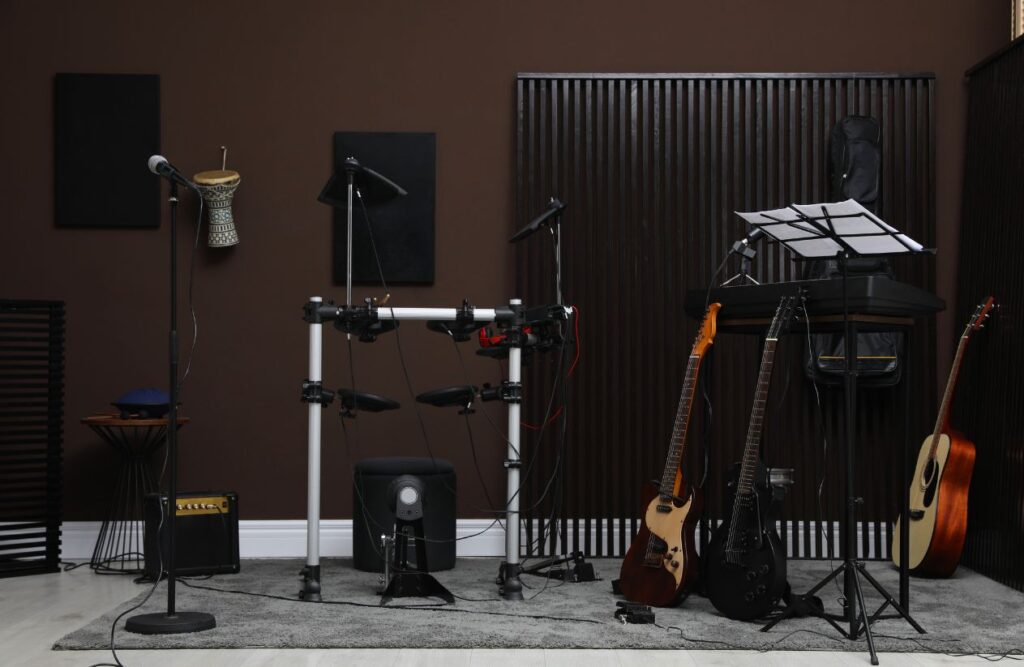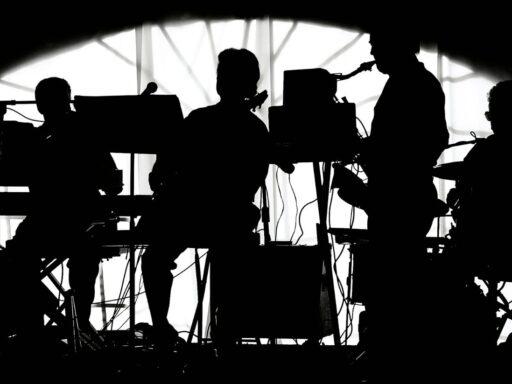Imagine the stage lights hitting you, the roar of the crowd, the pure exhilaration of sharing your art. This is the captivating allure of the gigging dream, a powerful force drawing musicians, DJs, and entertainers to pursue a life in live performance. The freedom, the energy, the connection – it’s undeniably magnetic.
However, the reality of a career built on gigs extends far beyond those electrifying moments. Understanding the full spectrum of the pros and cons of gigging is crucial for anyone considering this path.
This article offers a realistic exploration of the live performance career. We will delve into the compelling advantages, such as creative liberation and audience connection, alongside the significant challenges, including income variability and demanding schedules.
Our aim is to provide you with the insights needed to determine if the dynamic world of gigging truly aligns with your personal and professional aspirations.
The Encore of Opportunity: Exploring the Compelling Pros of Gigging

Unleashing Your Artistry and Connecting with Your Audience
At the heart of gigging lies the raw, unfiltered connection between artist and audience. Unlike the often-isolated process of studio recording or online streaming, live performance offers an immediate feedback loop.
You can feel the energy shift in the room, see faces light up during a favorite song, and witness firsthand the impact your art has on others.
This direct interaction is not only deeply rewarding emotionally but also invaluable for honing your craft. Playing for diverse crowds in various venues – from the intimate corner of a cozy café to the vibrant atmosphere of a bustling club or the vast expanse of a festival stage – forces you to adapt and refine your delivery.
Each setting demands a unique approach, pushing you to explore different facets of your artistry and connect with people from all walks of life.
Imagine a young saxophone player, initially shy and uncertain, landing a regular gig at a local jazz bar. Night after night, as he improvises solos and feels the appreciative nods and applause from the small but attentive audience, his confidence blossoms.
He starts experimenting with new melodies, reading the room to gauge what resonates, and even striking up conversations with patrons during breaks, receiving direct feedback that shapes his musical direction.
This intimate setting becomes his laboratory, a space where he not only shares his passion but also witnesses its power to move and connect with others, fueling his artistic growth in ways a practice room never could.
This profound connection is a significant draw for those weighing the pros and cons of gigging.
Also check out our article: Maximize Your Earnings: Expert Tips for Setting Higher Rates for Your Gigs
The Freedom and Flexibility of the Independent Performer
For many artists, the allure of gigging lies in its inherent freedom and flexibility, a stark contrast to the structured routine of traditional employment.
As a gigging performer, you often have the ability to choose which gigs to accept, allowing for a degree of control over your schedule.
This independence can be incredibly liberating, offering the opportunity to pursue diverse performance opportunities that align with your artistic interests and career goals.
Whether it’s playing your original compositions at a singer-songwriter night, DJing at a private event, or providing entertainment for corporate functions, the variety keeps things fresh and allows you to explore different facets of your talent.
While the schedule can be unpredictable, the power to curate your own performance calendar (to a certain extent) is a significant advantage for those who value autonomy and the ability to shape their professional lives.
Networking and Building Your Tribe
The gigging circuit is a fertile ground for building invaluable relationships. Each performance provides an opportunity to connect with a diverse range of individuals who can significantly impact your career trajectory.
Venue owners and event organizers are key contacts who can offer repeat bookings and introduce you to other opportunities.
Fellow artists you share the stage with or encounter at open mics can become collaborators, mentors, or simply a supportive community. And of course, every audience member has the potential to become a loyal fan, spreading the word about your talent and supporting your future endeavors.
Consider a DJ who, through consistent gigs at a popular local club, not only secures a residency but also connects with other DJs and promoters.
These relationships lead to opportunities to play at larger events and even collaborate on music production projects. Simultaneously, by actively engaging with the crowd during their sets and on social media, they build a dedicated fanbase who attend their shows and share their mixes online, further expanding their reach.
In today’s digitally connected world, leveraging social media platforms to nurture these connections, share your work, and engage with your growing network is crucial for sustained success in the gigging landscape.
Accelerated Personal and Artistic Growth
The consistent demands of live performance act as a powerful catalyst for personal and artistic development. Stepping onto a stage, night after night, hones your stage presence, teaching you how to command attention and connect with an audience visually as well as sonically.
The unpredictable nature of live gigs – from technical difficulties to unexpected audience reactions – cultivates adaptability and the ability to think on your feet.
Improvisation, whether musical or in your stage banter, becomes a vital skill, pushing you beyond your comfort zone and fostering creativity in real-time. Overcoming the nerves before a performance, handling unexpected challenges during a set, and consistently delivering engaging shows builds resilience and unwavering confidence.
These experiences, accumulated over time, contribute significantly to your artistic maturity, shaping you into a seasoned performer ready to tackle the long-term journey of a successful career in the vibrant world of live entertainment.

The Unpredictable Rhythm of Income
One of the most significant hurdles in the gigging world is the inherent instability of income. Unlike the consistent paychecks of traditional employment, income from live performances can fluctuate wildly depending on the season, the day of the week, and the sheer availability of bookings.
There will be periods of abundance, where gigs are plentiful, followed by stretches where opportunities are scarce. This unpredictability makes financial planning a constant challenge.
Furthermore, the gig economy rarely comes with the safety net of traditional employee benefits. Health insurance, retirement plans, and paid time off are typically not offered, placing the onus on the individual artist to secure these necessities independently.
To navigate this financial landscape, diligent budgeting, meticulous tracking of income and expenses, and exploring diversified income streams beyond just performing (such as teaching, merchandise sales, or online content creation) become crucial survival skills for any aspiring gigging professional.
The Physical and Emotional Toll of the Road (or the Venue Circuit)
The romantic image of the touring musician or the in-demand DJ often obscures the significant physical and emotional demands of the lifestyle.
Travel, even within a local circuit, can be tiring and time-consuming. The repeated lifting and setting up of equipment, often late at night, takes a physical toll. Performances themselves, while exhilarating, require significant energy and stamina.
Over time, this relentless cycle can lead to physical exhaustion and burnout.
Moreover, the emotional landscape of a gigging career can be just as challenging. The pressure to deliver a captivating performance night after night, the potential for rejection when seeking bookings, and the feeling of being constantly “on” to network and promote oneself can be emotionally draining.
Prioritizing self-care, being mindful of mental health, and cultivating a strong support system of friends, family, or fellow artists are essential for long-term sustainability in this demanding profession.
The Elusive Work-Life Harmony
Maintaining a healthy work-life balance can feel like a constant tightrope walk for gigging artists. The irregular and often late-night schedules make it difficult to establish consistent routines and can encroach upon personal time and relationships.
The pressure to accept gigs whenever they are offered, for fear of missing out on opportunities, can make it challenging to schedule time off or plan vacations. This blurring of lines between professional and personal life can lead to strained relationships and an increased risk of burnout.
Consciously setting boundaries, intentionally scheduling downtime, and learning to say “no” to gigs when necessary are vital strategies for preserving personal well-being and fostering healthier relationships amidst the unpredictable demands of a gigging career.
The Business Burden on the Artist
Beyond the artistic endeavors, a significant portion of a gigging artist’s time is often consumed by the less glamorous but equally essential aspects of running a small business.
This includes the responsibility of contract negotiation, ensuring fair compensation and clear terms for each engagement. Self-promotion is paramount, requiring artists to actively market their services through online presence, networking, and promotional materials.
Invoicing clients and managing finances, including tracking income and expenses, falls squarely on the artist’s shoulders. Furthermore, the practicalities of equipment maintenance, transportation, and potentially even self-management (booking gigs, coordinating logistics) add to the workload.
Many talented artists may lack formal business training, making it crucial to seek out resources such as online courses, workshops, or mentorship opportunities to develop the necessary business acumen for navigating the complexities of the gig economy and ensuring long-term professional success.
Finding Your Frequency: Determining if Gigging Resonates with Your Aspirations

Self-Reflection: Aligning Your Goals with the Gigging Lifestyle
Before fully embracing the life of a performing artist, it’s crucial to engage in honest self-reflection.
What are your core career goals? Is your primary driver the pursuit of widespread fame and recognition? Is it the pure joy of artistic expression and connecting with an audience on a personal level? Or is financial stability and a predictable work-life balance your top priority?
Understanding these fundamental aspirations is the first step in determining if the pros and cons of gigging align with your personal vision of success.
Consider an artist whose ultimate goal is to create and record original music in a studio setting. While gigging can provide valuable performance experience and potentially fund studio time, the constant demands of live shows might detract from their creative focus and studio work.
Conversely, an artist who thrives on live interaction and whose primary goal is to connect directly with audiences and build a local following might find gigging to be the perfect avenue.
Similarly, someone prioritizing a stable income and regular hours might find the unpredictable nature of gigging a significant obstacle, potentially needing to supplement their performance income with other work or explore more consistent avenues within the entertainment industry.
Practical Considerations: Are You Ready for the Realities?
Beyond your overarching goals, it’s essential to assess your readiness for the practical realities of the gigging lifestyle.
As we’ve explored, success in this field demands a unique blend of adaptability, resilience, self-discipline, and business acumen. Are you prepared to navigate inconsistent income, manage your own finances, and handle the administrative tasks of self-promotion and booking?
Can you bounce back from a less-than-stellar performance or a canceled gig without losing momentum? Are you disciplined enough to practice regularly, maintain your equipment, and consistently seek out new opportunities?
Ask yourself honestly: How comfortable are you with uncertainty? Are you a self-starter who can motivate yourself even without a traditional boss or structure? Do you possess the organizational skills necessary to manage your schedule and finances effectively?
Starting out, it’s also wise to consider having a backup plan or a supplementary source of income to cushion the financial fluctuations that are often part of the initial stages of a gigging career.
A realistic assessment of your preparedness for these challenges is crucial for making an informed decision about whether to pursue gigging as a primary career path.
Long-Term Vision: How Does Gigging Fit Your Trajectory?
Finally, consider how gigging fits into your broader, long-term career trajectory. For some artists, live performance is a stepping stone, a way to build a following, gain experience, and potentially attract the attention of record labels, booking agents, or other industry professionals. Gigging can provide invaluable exposure that can lead to opportunities for larger tours, collaborations, or even teaching positions.
For others, building a sustainable, long-term career primarily through consistent gigging within a specific scene or for a particular type of event can be a fulfilling and viable path.
Regardless of your ultimate aspirations, the entertainment industry is constantly evolving. Embracing a mindset of continuous learning, adapting to new trends and technologies, and consistently refining your skills are essential for long-term success.
Whether you envision yourself headlining major festivals or becoming a beloved fixture in your local music scene, understanding how gigging can serve as a vehicle to propel you towards your goals is a critical part of the decision-making process.
Also check out our article: 5 Essential Tips for Landing Restaurant Gigs: A Musician’s Guide
Conclusion
In conclusion, the journey of a gigging artist is a dynamic blend of exhilarating highs and demanding lows. We’ve explored the compelling allure of creative freedom, direct audience connection, and invaluable networking, balanced against the realities of income instability, physical and emotional tolls, and the constant need for business acumen.
Ultimately, deciding if the pros and cons of gigging align with your aspirations is a deeply personal one. There’s no universal formula for success, and the path that resonates with one artist may not suit another.
If the stage calls to you and you possess the resilience, adaptability, and passion to navigate its challenges, a career in live performance can be incredibly rewarding.
Embrace the journey, learn from every experience, and never lose sight of the artistic fire that fuels your dream. The world of entertainment awaits those who are willing to tune in to their own unique path and play their hearts out.
What are your thoughts or experiences with the gigging life? Share your insights in the comments below!
Frequently Asked Questions About the Gig Life
As someone who’s spent countless nights under the stage lights, I’ve learned a thing or two about navigating the world of gigging. Here are some of the most common questions I get asked by aspiring and current performers:
How do I even start finding gigs?
Getting your foot in the door often involves a multi-pronged approach. Start by building a strong online presence – a website and active social media are non-negotiable. Locally, immerse yourself in your scene. Attend open mics, jam sessions, and other artists’ shows. Network with venue owners, managers, and other performers. Don’t be afraid to reach out directly with a well-crafted email and your electronic press kit (EPK). Platforms like AGNT can also be helpful in discovering opportunities, so explore those resources.
What’s the most important thing to include in my EPK?
Think of your EPK as your professional calling card. At a minimum, it should include a compelling bio that tells your story, high-quality photos that capture your essence as an artist, professionally recorded music samples that showcase your talent, and your contact information. If you have any notable press coverage or performance videos, include those as well. Tailor your EPK to the specific type of gig you’re pursuing.
How can I stand out and get rebooked at venues?
Talent is just one piece of the puzzle. Professionalism goes a long way. Be punctual, communicate clearly with the venue staff, and be respectful of their space and equipment. Deliver a memorable performance – connect with the audience, be engaging, and showcase your passion. After your set, thank the audience and the venue staff. Building genuine relationships is key to getting rebooked.
The income from gigs is so unpredictable. How do I manage my finances?
This is a common challenge. The key is to create a budget and stick to it as much as possible. Track your income and expenses diligently. Try to anticipate slower periods and save during busier times. Consider setting up separate bank accounts for business and personal expenses. Explore budgeting apps or spreadsheets to help you stay organized. Diversifying your income streams beyond just performing can also provide more financial stability.
What are some ways to take care of myself amidst the demanding gig schedule?
Self-care is crucial for longevity in this industry. Prioritize sleep, even if it means adjusting your schedule. Try to maintain a healthy diet and stay hydrated. Regular exercise can help manage stress and boost your energy levels. Be mindful of your mental well-being – don’t hesitate to reach out to friends, family, or even a therapist if you’re feeling overwhelmed. Learn to say “no” to gigs when you need a break.
In today’s world, social media is incredibly important. It’s a powerful tool for connecting with fans, promoting your gigs, and building your brand. Be active and engage with your followers. Share your music, performance clips, and behind-the-scenes glimpses of your artistic journey. Use relevant hashtags to reach a wider audience. Social media helps you stay top-of-mind and build a loyal fanbase.
What if I make a mistake during a performance?
It happens to everyone! The key is how you handle it. Don’t dwell on it. If it’s a minor slip-up, most audiences won’t even notice. If it’s more significant, try to recover gracefully with a bit of humor or a seamless transition. The ability to think on your feet and keep the energy going is a sign of a seasoned performer.
How do I know when it’s time to raise my rates?
Several factors can indicate it’s time for a rate increase. If you’re consistently booking gigs and are in high demand, that’s a good sign. If you’ve gained more experience, built a larger following, or invested in better equipment, your services are more valuable. Research what other artists in your genre and area are charging. Don’t be afraid to confidently communicate your value.
:






